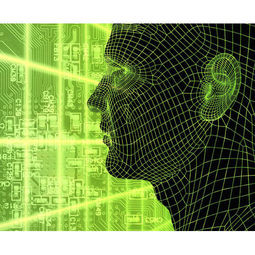
Published on 08/01/2016 | Market Sizing
While it may be difficult to envision the exact details of our world in the next decade, current trends and developments in technology can inform our vision of the future. Sans a technological bouleversement, how companies engage with IoT-driven solutions to derive just the right insights and manage workflows and automation will shape business practices, industries, and human interactions in radical new ways.
Today, companies and organizations hoard their data, but the real intrinsic and extrinsic value derived from data emerges when firm-specific data is combined with exogenous information. This can be seen in the use of weather data to better predict ice cream sales . Cooperation and data sharing within and across industries will revolutionize the next stage of data analytics insights. Traditional industries, such as manufacturing and heavy industries, will evolve into the product + platform as a service. Some enterprises will transform into network ecosystems to leverage the network effect.
Currently, standards are a snarl of proprietary polemics, but the future is open source---speeding the implementation and cross-functionality of networks requires a universal set of guidelines. The newly-formed Open Connectivity Foundation , as well as AllSeen Alliance and Industrial Internet Consortium , is trying to reduce fragmentation in the industry and bring interoperability to devices and networks. The Open Compute Project’s Telco Project envisions a new 5G IoT platform: scalable, low-latency, error-correcting IoT networks that will cater to billions of devices.
Everyone knows that the 500 lbs. gorilla in the room is security. Consumers are (rightly) concerned about becoming a target through stolen information, while companies struggle with a broad range of troubles, from lost market share from stolen R&D to public backlash against perceived inadequacies in protections. There are a number of solutions already enjoying some success in providing peace of mind and privacy for data, and they will only improve as analytics informs more secure processes and complex algorithms. For example, ownCloud offers customers a private, open source cloud on any server and currently boasts over 8 million users. Private data vaults allow users to control the use of their own data: rather than sharing information, companies query the encrypted data vault that returns the data without compromising the consumer’s privacy.
The ubiquity of IoT will give rise to the increased use of decentralized, anonymous systems. While cryptocurrency Bitcoin was the first to make the idea of a Blockchain significant, look for others to move towards a decentralized ledger system.
Data insights will begin with the strategic outcomes of the analysis instead of simply aggregating data. Companies will invest significant resources in creating an approach to getting the types of insights they need to better inform their decisions. More companies will be deploying parts of their systems to the cloud, and there will be an increasing momentum towards a hybrid approach of using the cloud and computing on the edge.
Science fiction stories are replete with human/machine interactions, and the next ten years will begin to make some of those visions a reality (of course, all AI should adhere to Asimov’s Three Laws of Robotics). As AI/machine learning becomes more pervasive, the need to interface with numerous apps and devices will disappear. Eventually, there will be a single AI assistant that will navigate the virtual world for us, a virtual Jeeves (or Alfred, for the more adventurous) will identify and interact with the appropriate network or app to deliver the desired information or outcome.
Data-driven decision-making is particularly useful in making individual health decisions, which is currently confined to self-monitoring with wearables like wristbands or compression shirts. However, the relationship between an individual and their doctor will be altered forever, as individuals use their virtual assistant to aid in making better health decisions. Delitescent information that was never within the reach of the average person will be served up regularly in order to allow for personalized control over an individual’s lifestyle.
With the power of a virtual assistant to increasingly assume a variety of roles, individuals will have the opportunity to turn towards self-improvement and the construction of stronger relationships. A personally-empowered society will begin to evolve in response to the technology. In Martin Seligman’s, Flourish , he uses his years of research to promote the idea of “Positive Psychology”. The goal of the Positive Psychology movement is about transforming lives for the better, exactly the direction we are moving in with data and analytics. Seligman’s ideas about what makes a good life—for individuals, for businesses, and for nations---will become increasingly important. Improved access to enhanced insights turns society from merely reacting to problems (dealing with negatives) to addressing them before they get out of hand. Individuals will be better equipped to control their own outcomes and use information to make the world around them a better place.
Current trends are driving the future of IoT. Wherever that journey leads will be one more step on the road to creating superior companies, healthier individuals, a stronger society and a more beautiful world.